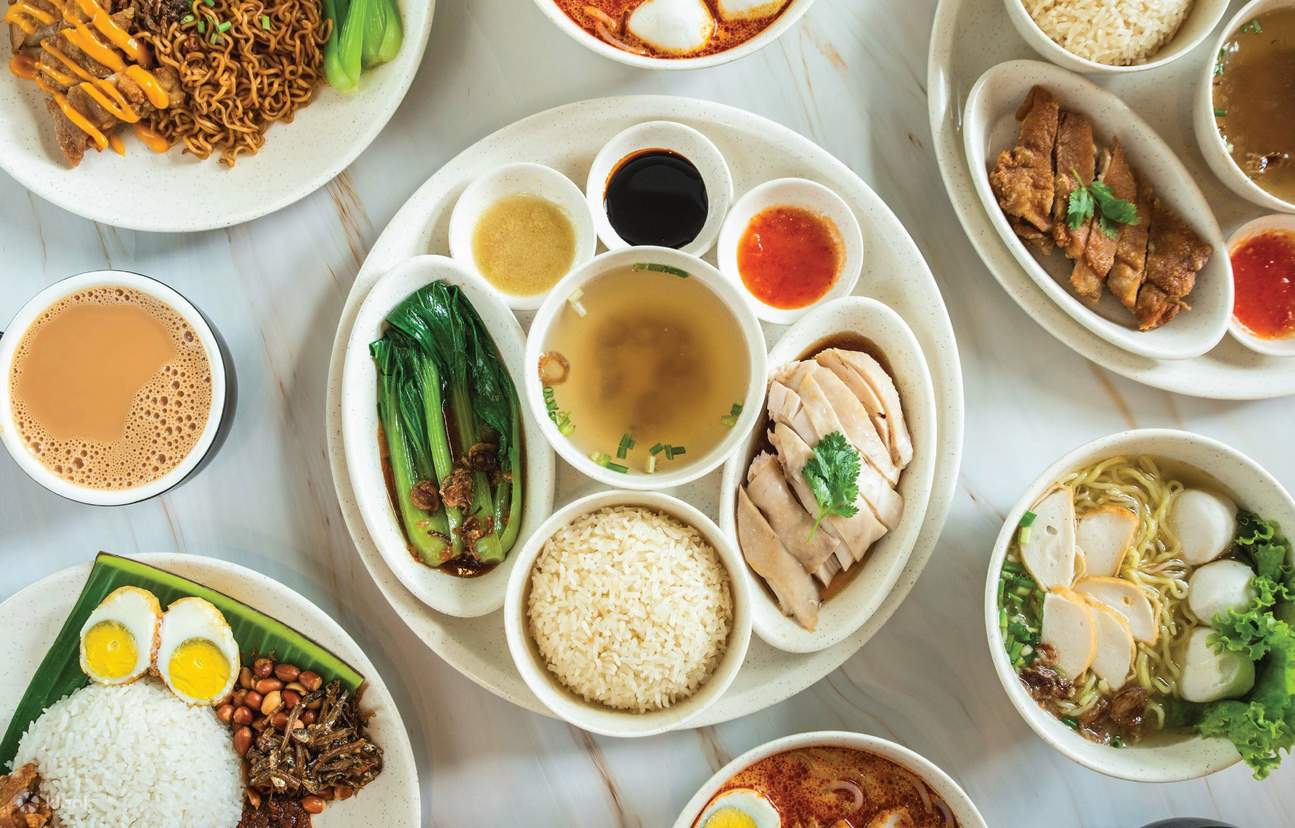Nanyang Cuisine is a lesser-known but incredibly rich and diverse culinary tradition that beautifully blends Chinese cooking techniques with Southeast Asian ingredients and flavors. The term Nanyang, which means “Southern Ocean” in Chinese, refers to the region encompassing Singapore, Malaysia, Indonesia, Thailand, and parts of Vietnam and the Philippines—areas where early Chinese immigrants settled and influenced the local food culture.
Over generations, Nanyang Cuisine has evolved into a distinct fusion of Chinese and Southeast Asian flavors, characterized by the use of aromatic spices, coconut milk, tropical ingredients, and bold seasonings. This article explores the origins, signature flavors, and must-try dishes that define Nanyang Cuisine.
The Origins of Nanyang Cuisine
The history of Nanyang Cuisine dates back to the 15th century, when Chinese traders and immigrants from southern China, mainly the Fujian, Guangdong, and Hainan provinces, settled in Southeast Asia. As they adapted to their new surroundings, they incorporated local ingredients such as lemongrass, turmeric, galangal, coconut milk, and chili peppers into their traditional Chinese recipes.
Over time, this fusion of Chinese cooking techniques and Southeast Asian spices gave birth to what we now know as Nanyang Cuisine—a harmonious blend of sweet, savory, spicy, and aromatic flavors.
Key Ingredients and Flavors in Nanyang Cuisine
What makes Nanyang Cuisine truly special is its bold and diverse flavor profile, achieved by blending Chinese seasonings with Southeast Asian herbs and spices. Some of the key ingredients that define this cuisine include:
Aromatic Herbs and Spices
- Lemongrass – Adds a citrusy fragrance to curries and stir-fries
- Galangal and Ginger – Provides a warm, slightly peppery taste
- Turmeric – Gives dishes a vibrant yellow color and earthy flavor
- Star Anise and Cloves – Often used in braised dishes for a deep, warm aroma
Tropical Ingredients
- Coconut Milk – Used in curries and soups for creaminess and richness
- Pandan Leaves – Infuses desserts and rice dishes with a fragrant sweetness
- Tamarind – Adds a tangy, slightly sour taste to seafood dishes
Signature Sauces and Condiments
- Soy Sauce and Oyster Sauce – Staple seasonings in Chinese-style stir-fries
- Sambal Chili – A spicy chili paste made with shrimp paste and lime
- Belacan (Fermented Shrimp Paste) – Enhances umami flavors in many Nanyang dishes
Must-Try Dishes in Nanyang Cuisine
Hainanese Chicken Rice
One of the most famous Nanyang dishes, Hainanese Chicken Rice consists of poached chicken served with fragrant rice cooked in chicken broth, accompanied by chili sauce and ginger paste. Originally from Hainan, China, this dish was adapted with Southeast Asian influences and is now a staple in Singapore and Malaysia.
Laksa
A rich and creamy noodle soup, Laksa is a perfect example of Nanyang fusion. The Nyonya Laksa variety, popular in Singapore and Malaysia, features rice noodles in a coconut milk-based broth with prawns, tofu puffs, and sambal chili. Another variation, Asam Laksa, uses a tangy tamarind-based broth.
Char Kway Teow
This beloved stir-fried noodle dish combines flat rice noodles, eggs, prawns, Chinese sausage, bean sprouts, and soy sauce, all wok-fried over high heat for a smoky aroma known as wok hei.
Bak Kut Teh
A hearty and aromatic pork rib soup, Bak Kut Teh is flavored with herbs and spices such as star anise, cinnamon, and garlic. The Singaporean and Malaysian versions are influenced by Nanyang flavors, with some variations using dried seafood for extra umami.
Nasi Lemak
Originally a Malay dish, Nasi Lemak has become a staple in Nanyang Cuisine. It features coconut-infused rice, sambal chili, fried anchovies, peanuts, and a choice of proteins such as fried chicken, otak-otak, or rendang.
Kaya Toast
A popular Nanyang breakfast dish, Kaya Toast consists of crispy toasted bread spread with kaya (a coconut and egg jam) and butter, served with soft-boiled eggs and kopi (traditional Nanyang coffee).
How Nanyang Cuisine Continues to Evolve
Nanyang Cuisine is not just a relic of the past—it continues to evolve with modern interpretations and creative fusions. Many chefs and home cooks are experimenting with:
✔ Healthier versions – Using less oil and substituting coconut milk with lighter alternatives
✔ Fusion concepts – Blending Nanyang flavors with Western or Japanese cuisine, such as Laksa Pasta or Hainanese Chicken Burgers
✔ Plant-based adaptations – Creating vegan versions of Nanyang classics using tofu, mushrooms, and plant-based meat alternatives
Despite these modern changes, the heart of Nanyang Cuisine remains rooted in tradition, celebrating bold flavors, diverse cultures, and a rich history.
Conclusion
Nanyang Cuisine is a testament to the rich cultural exchanges between Chinese immigrants and Southeast Asian communities, creating a unique and flavorful culinary tradition. With its harmonious blend of Chinese techniques and tropical ingredients, this cuisine offers something for everyone—from savory and spicy noodles to comforting coconut-based desserts.
If you love bold flavors, diverse textures, and rich culinary history, Nanyang Cuisine is a must-try. Whether you enjoy Hainanese Chicken Rice, Laksa, or Kaya Toast, each dish tells a story of migration, adaptation, and innovation.
Next time you explore Southeast Asian food, keep an eye out for authentic Nanyang flavors—you will not be disappointed.
FAQs
What is the difference between Nanyang Cuisine and Peranakan Cuisine?
Peranakan Cuisine, also known as Nyonya Cuisine, is a specific subset of Nanyang Cuisine with a stronger Malay and Indonesian influence, using more coconut milk, spices, and fermented shrimp paste.
Is Nanyang Cuisine spicy?
Some dishes, such as Laksa and Sambal-based stir-fries, can be spicy, but many others, like Hainanese Chicken Rice and Kaya Toast, are mild and flavorful without heat.
Where can I try authentic Nanyang Cuisine?
You can find Nanyang Cuisine at hawker centers, heritage restaurants, and local cafés in Singapore, Malaysia, and Indonesia, as well as in Chinatowns around Southeast Asia.
Can I cook Nanyang Cuisine at home?
Yes Many Nanyang dishes are easy to prepare at home using basic ingredients like coconut milk, soy sauce, sambal, and fresh herbs.
Is Nanyang Cuisine only found in Southeast Asia?
Due to migration, Nanyang Cuisine has spread to places like Australia, the UK, and the US, where you can find restaurants serving authentic dishes inspired by this rich culinary tradition.
Also read: Peru Urubamba: 8 Cultural Highlights That Define the Region




Leave a Comment